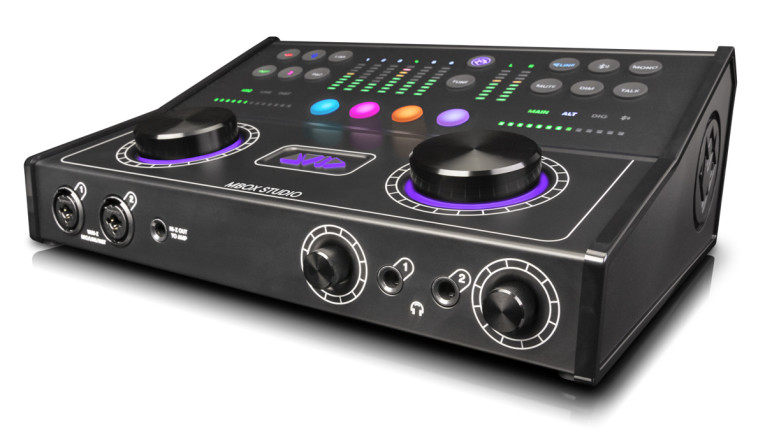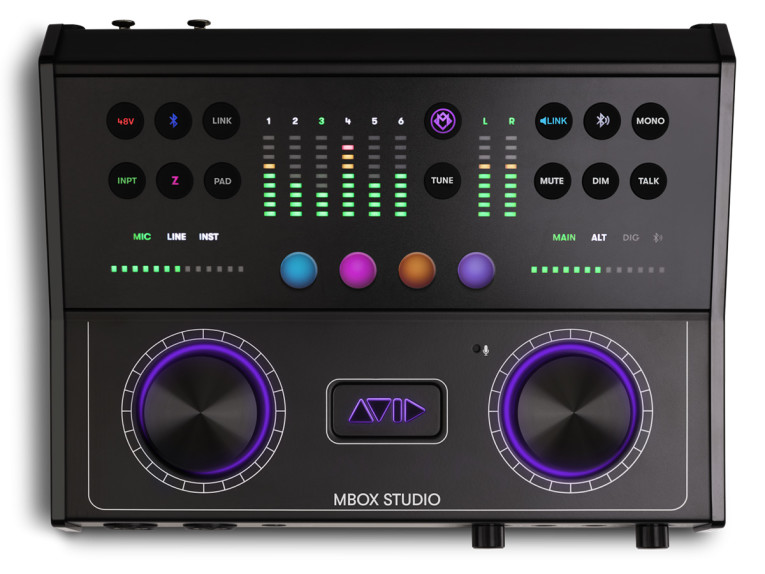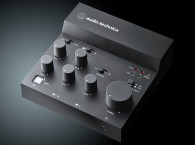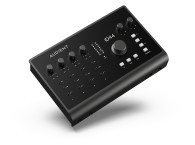
At the AES 2022 conference and NAB Show New York, Avid announced a new Carbon Pre preamplifier AVB interface, a unit that corrects some of the critical mistakes of the original Carbon and at least can be stacked for expansion but is not really a great option given the existing USB, Thunderbolt and even Dante alternatives. Avid also demonstrated the latest version of Pro Tools featuring Celemony Melodyne software via ARA 2 (Audio Random Access) - the last DAW software in the market, among all the leading music production systems, to do this integration.
More importantly, Avid also introduced its brand-new MBOX Studio, a comprehensive desktop interface that adds an interesting professional recording solution up to 24-bit/1292kHz for personal studios. Unfortunately the USB-C interface is only there because the supply chain has already pivoted to Type-C - very likely the Avid design team originally tried to source a discontinued Type B connector. And that is shown in the fact that Avid defines computer connectivity as "USB-C 2.0 (includes USB-A adapter)". This gives the impression that the company doesn't believe it really matters at this level. We know Avid means to say USB Audio 2.0 device class, which is what is available and universally supported, but hiding the USB interface implementation is not reassuring for potential buyers at a time when musicians and creators are looking at Thunderbolt and USB4 products on the market.

It's also not exactly a very good design, but then again, every Mbox interface in existence was always so different from the previous ones, that this one actually stands out positively for being so ugly, unrefined and almost kitsch with the LED colors. Avid says that the MBOX desktop audio interface was intended for musicians (it does look like a prototype guitar pedal from NAMM 1998) and other audio creators who work in music creation, podcasting, and streaming from their home studios. While the original Mbox was one of the most popular audio interfaces Avid ever made, at a time when there were not really many alternatives to record music on a computer, the new MBOX Studio is intended to be a complete interface for the modern world.
As with any basic USB interface, it works on both Mac and Windows operating systems running not only the bundled Pro Tools Studio subscription, but also any third-party digital audio workstations. Users can easily connect microphones, instruments, studio monitors, Bluetooth devices, and other analog, digital and MIDI gear to a total of 21 inputs and 22 outputs. Avid also says that the unit relies on the same mic pre-amps found in Avid’s S6L and Pro Tools Carbon system.

Free with the purchase of MBOX Studio are one-year subscriptions for Pro Tools Studio and Avid Sibelius Artist music notation software, in addition to the bundled MBOX Ignition Pack bringing Brainworx Megadual, Ampeg SVT-VR Classic and many other plugins and tools.
For guitar players who want to experiment with guitar sounds, the Pro Tools MBOX Studio offers variable Z impedance switching on instrument inputs, that allow users to change guitar tones while recording to complement the effects chain. They can also play through the renowned Guitar Amp plug-in Eleven MK II and numerous stompbox effects, in addition to incorporating personal outboard guitar effects pedals, reamplifying tracks, and staying pitch-perfect with the built-in tuner.
The new MBOX Studio also streamlines and accelerates workflows for podcasting, live streaming, social video, and sound design for picture. For example, users can assign buttons to their favorite functions to inject sound effects and bring in other sources and content such as intro music and voice overs — enabling users to quickly produce more polished and professional content.
It's a valid option for users that really want (or need) to work with Pro Tools, but little else, because the MBOX Studio is available "starting at $899 USD," which is far more than existing more powerful recording interfaces, including some that also double as monitor controllers in a desktop format.
www.avid.com








